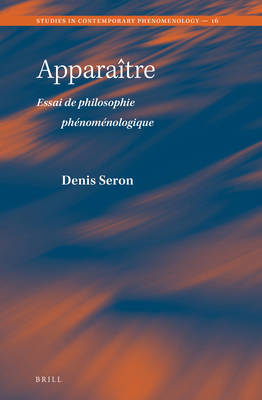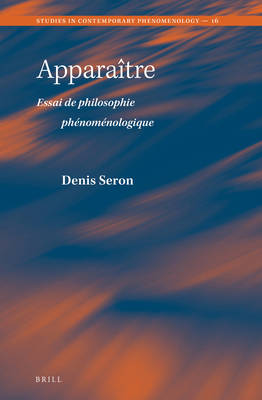
- Afhalen na 1 uur in een winkel met voorraad
- Gratis thuislevering in België vanaf € 30
- Ruim aanbod met 7 miljoen producten
- Afhalen na 1 uur in een winkel met voorraad
- Gratis thuislevering in België vanaf € 30
- Ruim aanbod met 7 miljoen producten
Zoeken
Omschrijving
L'intentionnalité -- cette singulière propriété qu'a l'esprit d'être dirigé vers le monde -- est aujourd'hui un des problèmes les plus débattus dans le domaine de la philosophie de l'esprit. Dans Apparaître: Essai de philosophie phénoménologique, Denis Seron entend montrer que l'approche phénoménologique peut contribuer positivement à ce débat. Il propose de voir dans l'intentionnalité une notion fondamentalement phénoménologique et, en conséquence, de la définir en termes d'apparence. Il esquisse ensuite, sur cette base, une théorie de l'apparence, dont il suggère enfin qu'elle fournit un cadre approprié pour d'autres problèmes comme ceux de l'unité de la conscience, de l'inconscient, etc.
Intentionality -- the mind's directedness towards the world -- is currently one of the most debated issues in the area of the philosophy of mind. In Apparaître: Essai de philosophie phénoménologique, Denis Seron aims to show that the phenomenological approach can contribute positively to this debate. He proposes to understand the notion of intentionality as a basic phenomenological notion and thus to define it in terms of appearances. On the basis of this, he then sketches a theory of appearance which he suggests is best suited to address a range of other issues such as the unity of consciousness, the unconscious, etc.
Intentionality -- the mind's directedness towards the world -- is currently one of the most debated issues in the area of the philosophy of mind. In Apparaître: Essai de philosophie phénoménologique, Denis Seron aims to show that the phenomenological approach can contribute positively to this debate. He proposes to understand the notion of intentionality as a basic phenomenological notion and thus to define it in terms of appearances. On the basis of this, he then sketches a theory of appearance which he suggests is best suited to address a range of other issues such as the unity of consciousness, the unconscious, etc.
Specificaties
Betrokkenen
- Auteur(s):
- Uitgeverij:
Inhoud
- Aantal bladzijden:
- 226
- Taal:
- Frans
- Reeks:
- Reeksnummer:
- nr. 16
Eigenschappen
- Productcode (EAN):
- 9789004349278
- Verschijningsdatum:
- 6/07/2017
- Uitvoering:
- Hardcover
- Formaat:
- Genaaid
- Afmetingen:
- 155 mm x 235 mm
- Gewicht:
- 496 g

Alleen bij Standaard Boekhandel
+ 717 punten op je klantenkaart van Standaard Boekhandel
Beoordelingen
We publiceren alleen reviews die voldoen aan de voorwaarden voor reviews. Bekijk onze voorwaarden voor reviews.








